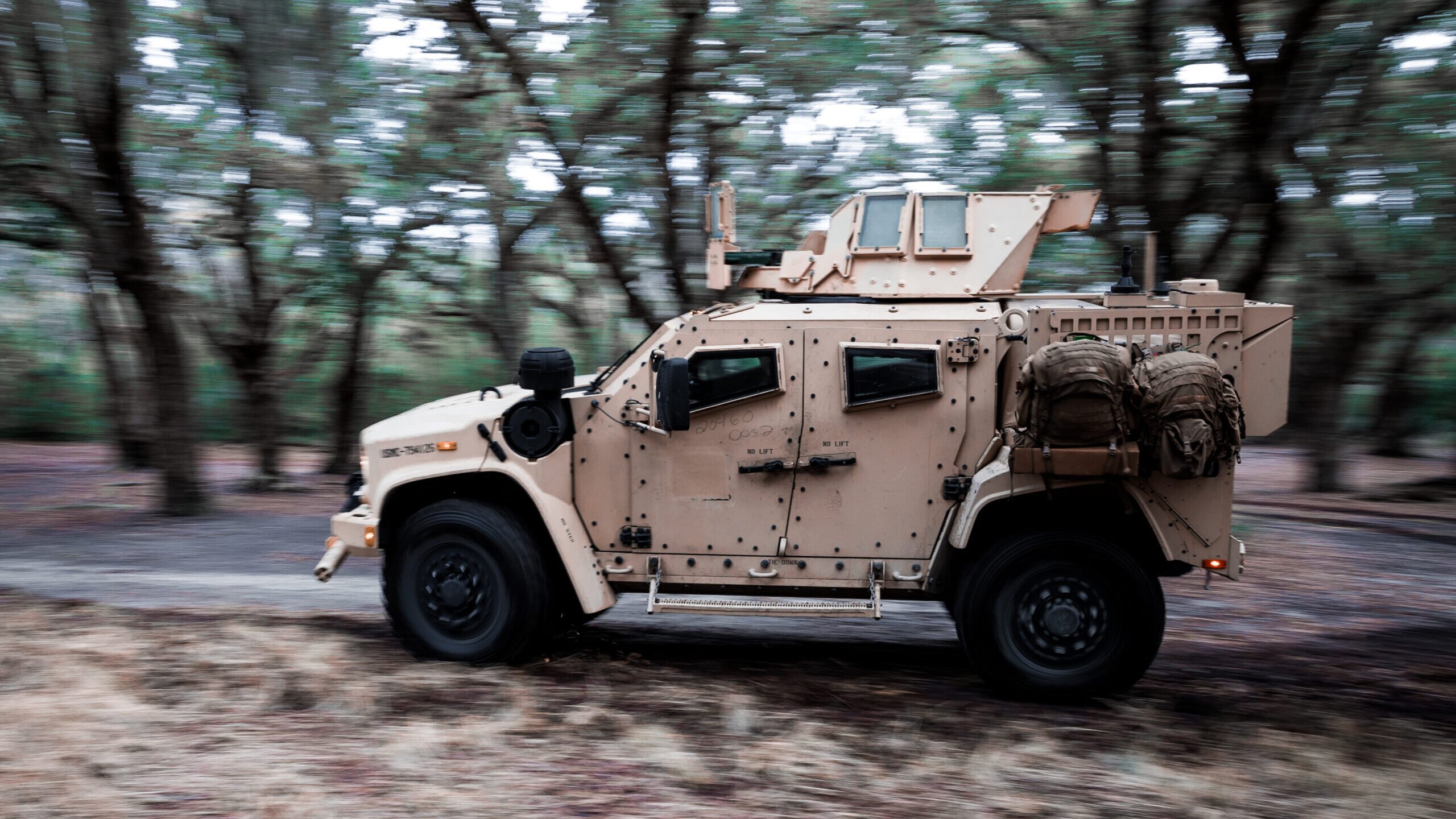
The Army’s 6T Lithium-Ion battery will eventually be added to the JLTV, as well as the Stryker and Mobile Protected Firepower. (U.S. Marine Corps photo by Lance Cpl. Zachary Zephir)
WASHINGTON: The US Army’s ground vehicle research lab is working on a collection of new batteries meant to propel the service toward hybrid and, eventually, fully-electric vehicles — ones that will give soldiers more operational flexibility in the field and could eventually power weapons systems.
In a recent interview with Breaking Defense, a lab official described how the service is in the early stages of a multi-decade journey to add hybrid and fully-electric vehicles into its fleet, in part to reduce its climate impact, but also because of electric power’s operational impact. The service’s recent climate strategy laid out plans to hybridize the service’s tactical fleet by 2035, with fully electric vehicles targeted for 2050.
“As we start to go into our tactical vehicles, we believe that those can be electrified pretty easily in that 2050 period of time,” said Laurence Toomey, branch chief for the energy storage team at Army’s Ground Vehicle Systems Center (GVSC).
However, the service will have to work incrementally to reach that point, starting with upgrading to Lithium-Ion batteries for some ground vehicles. Current Army vehicles are powered by lead-acid 6T batteries, common to 80-90% of its fleet and a NATO standard power source, according to Toomey. The GVSC is finalizing a 6T Lithium-Ion battery that would replace the lead-acid versions.
The operational benefits of that effort, he said, are the Lithium-Ion batteries allow for “extended” operations with the engine off. The battery will also improve anti-idling capabilities, which allows the on-board electronics to still function while the engine is off.
“What they want to do there is they want to facilitate longer silent watch,” Toomey said. “They want to turn the engine off and conduct longer duration missions without the heat signature and a noise signature from the engine. It also allows us to introduce the first step of our hybridization strategy and that really is anti-idle.”
Toomey said that the battery will be fielded in the “near-term” to programs such as the Stryker, Joint Light Tactical Vehicle and the new Mobile Protected Firepower, which was just awarded to General Dynamics Land Systems.
The challenge for the 6T Lithium-Ion battery is its lower voltage and lack of cooling, limiting it to lower energy operations. So the GVSC is also working on a higher voltage battery, dubbed the Modular High Voltage battery, with an eye on hybrid applications.
The MHV program is targeting a range of 50 to 600 volts and is focused on the next generation combat vehicle program. Toomey said that program is focused on creating a modular, common battery for the Army’s future vehicles.
“Rather than focusing on a specific battery for, say, a specific platform, because we don’t have any platforms quite yet, we’re focusing on developing a common module that can be scaled,” Toomey said.
Conceptually, the MHV battery links 50-volt modules together to scale up to high-voltage power source, up to 600 volts. Toomey said that kind of wattage could be used for operations including silent mobility and electrified weapon systems. Additionally, the batteries will have thermal management.
But there are challenges for that battery as well, including meeting military survivability requirements, such as nuclear hardening, shock and vibration, and extreme operational conditions, Toomey said, which comes with potential financial downsides.
“The concern is going to be that that battery is going to be a fairly expensive technology, because you’re trying to meet the most aggressive tip-of-the-spear type of applications for those combat platforms,” he said.
To find more affordable options, the Army, partnered with the Navy and Defense Innovation Unit, turned to the commercial automotive industry that’s already invested in the high-voltage batteries needed for the larger combat platforms. That effort, called JumpStart for Advanced Battery Standardization, is looking at how the commercial battery technologies can be packaged to meet as many of the military requirements as possible. Instead of militarizing the commercial battery itself, Jumpstart is also exploring strengthening the batteries’ enclosure within the vehicle to address survivability.
Ultimately, which vehicles use the batteries will likely depend on the vehicles’ size.
“The MHV battery may meet more military requirements but will likely be more expensive and is being targeted for our most challenging combat platforms,” Toomey said in a follow-up email. “The JumpStart battery may not meet all military requirements and therefore may not be well suited for the most aggressive combat platforms, [but] the battery should be cheaper and well suited for lighter tactical platforms and other DoD applications (such as Navy and Air Force vehicles).”
In the meantime, according to the GVSC’s energy storage roadmap, it plans to kick off a new battery program in fiscal 2023: the Extreme Energy Hight Voltage battery. The roadmap states that the program will run from FY23-27 and will serve “plug-in and all electric vehicle applications,” while take lessons from the Modular High Voltage program.
Then, down the road, comes fully electrified vehicles.
“That last step will be the all-electric. That’s going to be the one that it would probably take the largest technology improvements to get to the ability to go and have that combat class vehicle,” Toomey said.
Move over FARA: General Atomics pitching new Gray Eagle version for armed scout mission
General Atomics will also showcase its Mojave demonstrator for the first time during the Army Aviation Association of America conference in Denver, a company spokesman said.


























